[subtitle]Part 1 of the Oddball Review Survival Horror Series[/subtitle]

One Sunday evening in September of 1993, I was browsing the shelves of the local mall’s Babbage’s store in hopes of finding a new computer game to play on the Dell 486 that I had only recently set up in my bedroom. Back then, before Internet-enabled mobile phones on which you could instantly find a review of practically anything before buying it, I chose which games to buy based almost entirely on their retail packaging. And I remember being particularly taken with the box art for the game I chose that night: it looked like a delicious amalgam of ghostly lore and modern armament. I bought the game, went home and installed it, and promptly creeped myself out to the point where I had to leave the lights on for a while longer than usual.
That game was The Legacy: Realm of Terror, a role-playing adventure developed by Magnetic Scrolls and published by MicroProse, and I fondly think of it as the game that primed me for my eventual love of the survival horror genre. I know that technically it wasn’t a survival horror game itself, since the genre did not even exist then, but it’s got all the trappings: boatloads of atmosphere, tons of creepy and disgusting monsters that you’re better off running from than killing, and a gothic story inspired by the work of H.P. Lovecraft and Edgar Allan Poe. If you enjoy games like Penumbra or Amnesia: The Dark Descent today, chances are you would have enjoyed The Legacy back then.
The Legacy places you in the role of a character who has just inherited the vast and ancient Winthrop estate in New England from a deceased relative whom you didn’t know you had. On the night you arrive for your first look at the property, you find yourself suddenly trapped in the house, held there by demonic forces that have barred the exits. Very quickly you discover that something terribly strange is going on at the Winthrop estate, something involving a family curse, horrifying improprieties that go all the way back to the 1600s, and astral devils attempting to break through into our world. You are the only one who can stop them — but their appointed hour draws near, and your time is short.
That sounds like the making of a good book, and indeed sometimes I wish The Legacy had one to go along with it. This was the game that introduced me to the macabre stories of H.P. Lovecraft — not in any direct way; though the aesthetic of both are similar — and I could easily see the game’s plot played out in one of Lovecraft’s chilling short stories.
I recently resurrected my copy of The Legacy for a proper modern-day playthrough, thanks to the wonders of DOSBox, a robust DOS emulator that is an absolute must for anyone wishing to relive their ’80s and early-’90s gaming experiences with minimal effort. In addition to seeking a nostalgia injection, I also wanted to find out if The Legacy would live up to my recollections of it, despite the weight of so many years’ of gaming evolution between then and now.
In short, yes. Emphatically yes.
Technologically, The Legacy is definitely showing its age, and this is where it appears roughest around its nearly 20-year-old edges. In a world of high resolution gaming and standardized “WASD” keyboard-and-mouse controls for first-person games, this is quite a departure: the 360×240 resolution will make you wonder how we ever crammed so much detail into so few pixels, and the unusual window-based, point-and-click interface feels clumsy and maddeningly slow, especially when you’re in combat with perilously little health and ammunition left.

Worst of all is the sound engine, which sucked even in 1993 with its terrible-quality samples, miserable hiss and constant dropouts. Frustratingly, DOSBox also cuts off every digitized sound effect early, somehow managing to make the game sound worse now than it did twenty years ago. (The game’s background music is a very notable exception to my ire, and one that I will discuss in more detail later.)
But if you brave these technical challenges, you are rewarded with a game that’s so rich in atmosphere, you’ll quickly come to forget about most of the problems. Legacy hails from the days before video games took on a Michael Bay-style race to assemble the prettiest, loudest, most violent — and yet most vacuous — spectacle possible. This should not surprise you, as Magnetic Scrolls was a well-known text adventure game developer in the 1980s, thought of by some as the “British Infocom“. Back then, games like this were referred to as interactive fiction, for that’s precisely what they were — what else could you do before complex computer graphics were even feasible, let alone beautiful?
The story is definitely the star of the show here, featuring collectible lore spread throughout the game in the form of journal entries, dropped notes, archived documents, even maps and sheets of music. You’ll put together many of these clues to help guide you toward your next task, or your eventual goal, which you invariably need certain items to complete. Gamers who are used to today’s adventures, which might have you flip a switch here or pick up a key there, may be surprised by the nested chains of events they’ll have to follow in order to do something seemingly pedestrian. Simply turning on the power on the ground floor — one of the first tasks you’ll have in the game — requires you to collect electrical tools with which to repair the circuit breaker, either find a key or put skill points into your “Force Door” stat, and face down numerous zombies and monsters along the way. Rather than seem tedious, I found that this added a measure of realism to the game.
Gameplay is about 75% adventuring — collecting clues, finding items, completing tasks — and 25% combat, where you’ll do battle with the likes of zombies, ghosts, rock demons, alien lifeforms from other planes of existence and others far more insidious. Among my favorite enemies are the Servitors (or “fishmen”), the squid-headed creatures clearly inspired by Lovecraft’s Cthulhu mythos, and Ellen Prentiss, the mental patient confined to Winthrop House’s private asylum who has killed her entire family. What’s great about Ellen is that, by the time you meet her, you’ve already read a lot about her from the documents and journals that both she and her brother Robert left throughout the house over the last thirty years. Realizing that you’ve just come face-to-face with the psycho you read about in those pages delivers a real feeling of dread.
Because The Legacy is an RPG at its core, you’ll also spend some time maintaining your player character (if you intend to survive, that is). The game makes this a challenge, being fairly stingy with experience points, and by presenting you with a large swath of skills and spells into which to put them. You’ll also need to make sure your character eats and sleeps from time to time, or s/he may go mad or starve to death. Speaking of spells, there’s a large number of magical cantrips available to heal you, empower you, and even unlock doors, all of which must first be found and learned before they can be cast. (They have great names too, my favorite of which is the Obsidian Shards of Annihilation.) And because this game isn’t for pussies, you’ll only be able to cast your spells when the spellbook is in your hand — not just in your inventory — and watch out, because you may often fail to successfully cast a spell, resulting in outright waste of your precious and hard-to-replenish magical energy. Exhausted yet?

The gameplay mechanics — specifically the interface to them — are much less impressive than the powerful array of skills, spells and stats laid out for you. The UI, as I previously touched on, is a strange window-based monstrosity, probably designed to capitalize on the popularity of Windows 3.1 which had just been launched the previous year. So yes, you can reposition your inventory view, your movement controls, your message window, even the viewport through which you see the world around you. But in practice you won’t, because at 360×240 there is just far too little screen real estate (or pixel density) to do anything of the kind. It’s a bizarre little quirk.
The interface is point-and-click, and in similar fashion you move throughout the game world you move by clicking on arrow buttons. Movement is based on “squares”, which has you stepping from one square of the map to another, and rotating in 90 degree turns. In addition to forward / back / turn left / turn right buttons, there are also strafe buttons. This is terrible when in combat as you might expect. Hilariously, it wasn’t until my recent reinstall of the game that I discovered that the WASD keys actually work too, which makes the game incredibly easier to play. This must have been a late addition to the game, because it’s not in the manual (but it is in the README file in your game directory, if you bother to read it. Only took me eighteen years to notice.)
Even with WASD available to save you, the combat system deserves mention for being truly cumbersome. Your character has two hands, naturally, and next to each hand are two buttons: “AIM” and “HIT”. When you come up against a foe, you click “AIM” to put yourself in aiming mode, then position the cursor over the enemy on the screen and, presumably, choose where you want to hit it. Then you click “HIT” to strike. What’s clunky is that while you’re doing all this, the enemy is attacking you, because The Legacy is a real-time combat game, not turn-based. Furthermore, I never really noticed that the “AIM” function made any difference whatsoever on the amount of damage dealt to a foe. You might aim for the head thinking that it’s going to put them down quicker, but it never seems to.
Furthermore, many of your enemies are of the vaguely blob-shaped alien variety, so how does it matter where you hit them? Lastly, the game’s AI and hit detection is truly horrendous, with enemies getting behind you or beside you just far enough that you can’t hit them and you can’t position yourself to correct this. To be fair, this may be deliberate — designed to encourage you to flee in terror rather than go all B.J. Blazkowicz on that zombie, demon or firespawn.
As you explore the secret passages, tunnels and locked floors of Winthrop Estate, the suspenseful soundtrack to your exploits is provided by minimalist, yet very effective music delivered via FM synthesis (what we used to call OPL2 or “Adlib” music, before MPU-401 MIDI really took off). The soundtrack, composed by John Broomhall, remains among my favorite PC game soundtracks to this day, and routinely gets airtime on my MP3 players or while I’m working. (I prepared an unofficial soundtrack album by recording each level’s music track in DOSBox and then cleaning up the results.) It’s equal parts spooky, tense, depressing and beautiful — particularly the game’s title theme, which shall never leave my head again.
The Legacy Title Theme
Edit 3/9/2013: At the request of a commenter, I’ve made my ten-track unofficial Legacy soundtrack album available for download in MP3 format. Grab it here.
Edit 7/3/2013: I’ve revised my Legacy soundtrack with three missing scores: Basement Level 2, Basement Level 3 and the anti-carrion boom box loop from the Egyptian temple. You can download the updated album from the same link. I still need to capture the Astral Plane and endgame cinematic scores, but in the absence of any saved games from those areas, I need to play further through the game in order to reach them organically. I’m sure I’ll get around to it at some point.
Even the game’s user manual deserves mention, and very clearly hails from a different era (one where manuals were not only necessitated by complexity, but were also points of pride). At just under 70 pages, the book not only goes into exhaustive detail about the game and how to play it, but also boasts a Winthrop family tree, floor plan and elevation drawings of the mansion, but also my favorite part: a lengthy journal purportedly attributable to Edgar Allan Poe, which describes the author’s visit to a friend’s estate during a journey through New England and the horrifying experience he had there. The friend was none other than one of the Winthrop elders and “the house” none other than the one you spend the game exploring. The way this was all dressed up as a manuscript by Poe — and convincingly so — makes the user guide as much of a delight as the game itself. Surely, a product of days now long since past.
Back in those days when I first played The Legacy, the only way I could get through it was by liberal use of a “trainer” (essentially, a cheat program) and the official hint manual, released on CompuServe by MicroProse QA’s Dave Ellis in 1994. Today, I need only my WASD keys, some cunning, and my memories of the past to guide me. It’s an experience well worth reliving, not only for the nostalgia factor, but for the legitimately fun time that The Legacy provides.
It was Magnetic Scrolls’ last game, and a fitting sendoff at that.
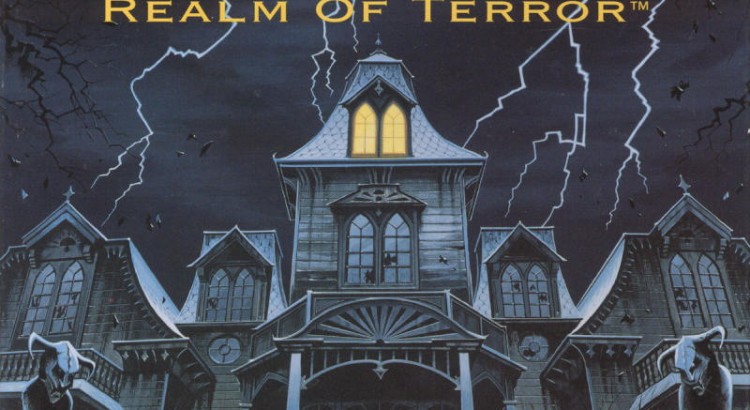

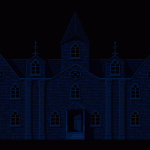
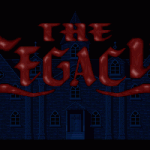

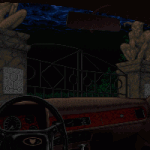

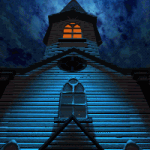
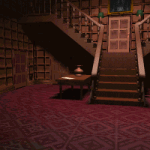
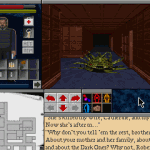


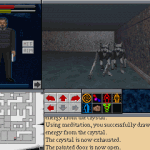
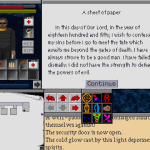
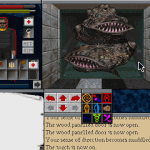
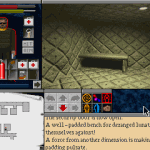
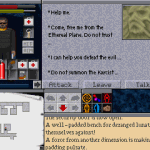







“YOU ARE A PRENTISS! WE BOTH MUST DIE!”
I still have never played this game; Forster lent me his copy once, but he didn’t give me the manual so I could never get past the copy protection question. Whoops.
And hilariously, the reason you bought this game on sight is the same reason I bought Silent Hill from Great Buy in 1999.
Hahaha, I must have used that in one of the stories, didn’t I? I forget which one now.
I hated that trend of using the instruction manual as copy protection back in the ’90s. (“Pop quiz: How many eyelets are on B.J. Blazkowicz’s boots?” Which reminds me, I once got busted by the CompuServe sysops for posting a message revealing the “joshua” backdoor to the Spear of Destiny manual check.)
Although I still have my copy of the game manual…and box, and floppy disks…it’s far easier to just download any and all of it from a site like this. Honestly, although I have my own copy of the game’s installation directory backed up somewhere, I just downloaded it on my most recent playthrough. It’s just easier. Incidentally, that site has the European version of the game, which really isn’t functionally different in any way.
Surprisingly, I’ve actually made some very good game purchase decisions based on the box art leap-of-faith. The original System Shock was another. Come to think of it, Silent Hill does have that great combo of ghost/demon stuff and a modern setting, doesn’t it? Always a favorite.
This stills remain my favorite game of all time. Just downloaded again the other day. Game still terrifies me. Great review. I contacted frictional games about doing a remake. I would love it see a remake. There games also terrifying. I think they would be a great match. The only problem I have with the games today is they puzzles are to easy to solve. I would love to see a remake of this game. http://www.frictionalgames.com/forum/thread-12932.html
Frictional seems to be the last studio that’s really doing justice to the survival horror genre; former mainstays like Resident Evil have turned into third-person shooters and new entries in the genre (like Amy) have been pretty poorly-made. I don’t know who owns The Legacy IP today, but I wouldn’t even mind a completely new game with a similar setting and RPG mechanics. For this type of game, Frictional is way, way at the top of my list of studios that would do it right, followed distantly by Monolith if you wanted to turn it into a story-driven horror FPS.
Thanks for your comments by the way; glad you liked the review. People who have played this game are fairly hard to come by in my experience!
Fantastic post on this sadly forgotten, dense and difficult game. I picked this up in my teens and got to, I think, the 4th floor by the time my resources utterly ran out – the game has a tough learning curve, one that I wasn’t ready to handle at that age. So I just let the thing sit. Thanks for Abandonia and Boxer, I’ve now played through the game half a dozen times or more. It was my Lovecraft before Lovecraft.
Thanks specifically for your comprehensiveness and truly nerdy insights – the “British Infocom” note, the tidbits from the manual, signaling out of that infectious title tune.
Only a few things in the game remain untouched – I have yet to get through the door on the second floor which hides Dee Kirby. I have tried putting all stat points into Willpower (got it up to like 8 out of 10) and the rest into powering up Key of the Shadow Lord. I’ve tried upping my mechanical skill to its greatest capacity. The only thing I have not tried is becoming super powerful and forcing the door open (the strength attributes are easily ignorable). And then there’s also the business of The Karcist – I always destroy his heart, but I believe that if you do NOT destroy it, you will have an opportunity to fight him. I would love to see this – no images of it seem to exist anywhere online. Wanna see that Karcist.
My main complaint about the game, really, is that there’s so little experience spread over so many skill points and spells (over 50% of those spells go totally unused anyway). The engine I don’t mind, the sound design I actually quite like, the clipping could be worse.
I’ve made a multi-page “Legacy Companion” in Google Docs, as I’ve become about as involved with the game as a person could (even read that manual page by page, indulgent Poe story). I would be awfully interested in getting my hands on some of those music files you’ve ripped from the game… 🙂
David, thanks for the great comments and I’m glad you enjoyed my remarks on the game. In my experience it’s rare to find someone else who even know this game (a couple of my high school friends are the only other two such people whom I’ve ever met), and I consider it a rare gem from the waning days of the adventure game. You sound like a true aficionado of the game, so I’m glad you stumbled across my site!
Regarding my “unofficial soundtrack”, I’ve zipped up the tracks I’ve got on hand and have uploaded it here; the link has also been added to the text of this article above. I don’t think this is every music track in the game — the Astral Plane music is missing, I think, and perhaps other incidental stuff — but I got just about everything else.
As far as getting through the door on the second floor to talk to Dee Kirby, that one’s a tricky one. There is only one way to open that door, and it has nothing to do with your character stats. You may have observed that there is a section of that floor which does not appear on your map, and within that section there’s a labyrinth of doors with numbered plaques on the wall next to them. You need to walk through the doors numbered 1 to 6 in order and without re-opening any of them in between. If you do, two things will happen: the missing area of the level will be revealed on your map, and Dee Kirby’s door — door #7 — will unlock.
I recall something similar about fighting the Karcist, but I don’t think I’ve ever fought him myself as I always destroyed the heart instead of giving it to him. As far as Microprose’s hint manual tells us, if you want to do battle with him, you need only give him the heart when he asks for it and he will begin attacking you — and he moves dreadfully fast. I should try going this route myself sometime for the experience.
You’re right about the XP and skill points, although this makes the importance of carefully choosing your character build-out all the more imperative, so I chalked it up to realism enhancement. I was more frustrated with the woefully few magic crystals in the game; it’s about right if your casts tend to go well, but when your spells keep fizzling repeatedly…ugh, I would often just reload my latest save to avoid the wasted magic energy! I myself like the sound design, I just wish there had been a better mechanism for delivering the digital effects as the fidelity was so poor (music excepted).
I’d be quite interested to see what you’ve put together in your Legacy Companion!
THRILLED to have this collection of mp3s! You’re a prince!
Since I wrote that post I did learn how to access the wildly important and exceptionally well-written Dee Kirby, who is only slightly out of place looking like a newsie from the 1910s.
I also fought The Karcist! It’s fun, and a bit dismaying to later realize that it is actually the game’s only real boss battle. After dropping the final coin, the Karcist appears looking like a warlock in a black trenchcoat with a, curiously, neon blue mohawk, and launches magic-only attacks at you fiercely. It is extremely difficult to dodge them all, moreover because you and he are trapped in an entirely walled in space that looks like a diamond, each point being a dead end. Kind of a pity that it’s so easy to avoid him altogether.
Yes, it’s really a shame that more people don’t know about this game. Just reading through the copious notes reveals a level of depth and quality to the narrative that is quite rare. I found myself thinking about how much fun it would be – if only I had the aptitude – to develop mods which could greatly expand the game’s breadth. New maps, new bosses, maybe new floors. It sure would be interesting to play through the game actually having strength be mildly relevant – since you must defeat Belthegor with magic, there simply is no point whatsoever to beafing up those stats. There are WAY too many spells to ever prove useful (how often do you find yourself relying on Sword of the Shadow?) and I always wanted those Dimensional Rifts to play a greater role – as it stands, you have to go WAY out of your way to make pragmatic use of them. Also, as I got better in my playthroughs, I found myself acquiring the katana quite early, and since it’s easily the best weapon it makes all those guns just clunky, jam-prone and totally useless. Stamina is not so important, and beefing up Willpower seems to be vital – keep it high enough, right off the bat, and you’ll find that Key of the Shadow Lord works every time (and you NEED that one to work every time).
Eh, in hindsight my Legacy Companion is a B+, but I still like it and would be happy to share it via Google Docs if you want to share your email. Mine is killerstencil@gmail.com.
Interesting! Thanks for reporting back about the boss battle with the Karcist, as I had never experienced it. On my next run-through I’ll conveniently “forget” his heart so I can see it for myself. The neon blue mohawk sounds like a peculiar bit of errata specific to the time period in which the game was made!
Incidentally, I had the same feeling about the narrative quality of the game which becomes increasingly obvious the more notes you read. I remember being almost obsessed with the Winthrop family tree and all of the madness that those generations had endured, and fascinated with the snippets of diary entries from bygone eras, written in increasingly elder forms of English the further you delved into the mansion’s depths.
I am but an amateur programmer with skills in decidedly different areas, else I would also love to modify the game. I became quite skilled in mapmaking for other games of this era, notably Wolfenstein 3-D and Doom, but there was a thriving mod community for both games and none at all for The Legacy.
In that vein, are you familiar with the fairly recent game Legend of Grimrock? It’s designed as a throwback to old-school, isometric-movement RPGs like The Legacy and controls in the exact same way. Although it has a strictly fantasy theme, it is incredibly atmospheric and does come with an excellent dungeon editor that lets you create your own environment. Had I the skill, I would modify enough of the game’s resources to create what used to be called a “total conversion” of the game to a retooled Legacy: Realm of Terror. As it stands, I hold out hope that a much more capable person might yet have the same idea.
You’re welcome again for the soundtrack, but I apologize for missing the track you had most looked forward to. I’d always known that my collection of recordings wasn’t quite complete, and I suspect that this will encourage me to go back and record the last of them.
Regarding your Legacy Companion, thanks for offering to share it! I’ll send you an email shortly with an address you can use.
I literally can’t believe I now have these mp3s. It’s like this wish I made 15 years ago that I’ve long since abandoned coming true.
Glad you’re enjoying them. It’s funny because the way you describe this is exactly how I felt when I discovered Hi-Tech had released some of the original Knight Rider episode scores back in 2000. Rare soundtracks are a hobby of mine…
Ooh… as grateful as I am, the one track I really wanted was the music for Basement Level 3 🙂
Sorry about that. I’ve added Basement Level 3 and a couple other missing tracks to the album. Zipfile has been updated.